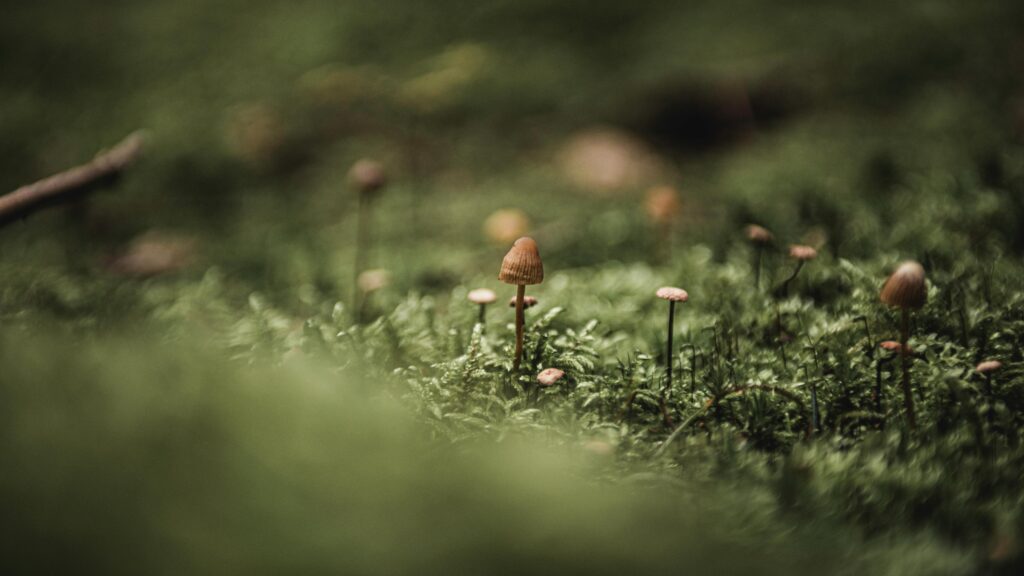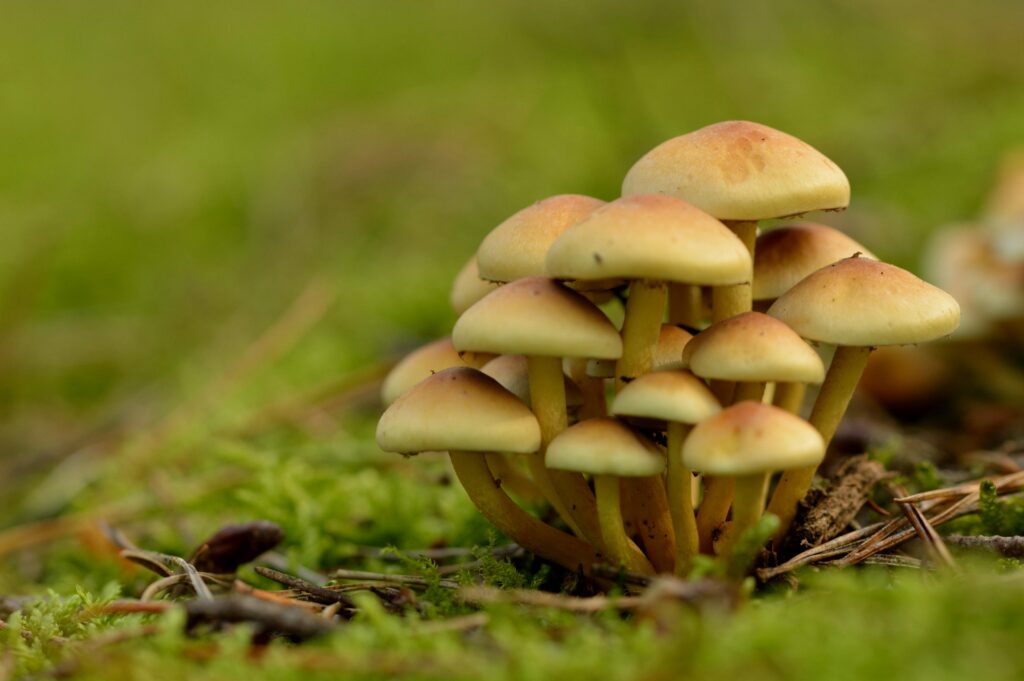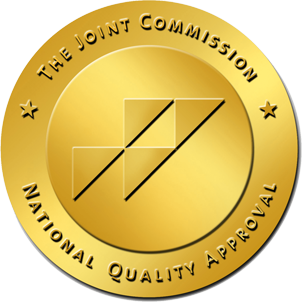
Psychedelic mushrooms or “magic mushrooms” include over 100 species of fungi, all of which naturally contain hallucinogenic substances. These mushrooms are very often used recreationally, typically for parties and raves, for their mind-altering effects. If you or a loved one is using them, it’s important to understand what mushrooms are, how they work, and how to use them safely.
Today, an estimated 8 million Americans use psilocybin mushrooms, making them the most used psychedelic drug. That means an estimated 3.1% of Americans use mushrooms as a drug.
Different Types of Psychedelic Mushrooms
There are over 100 species of psychedelic mushrooms. These grow across most of the world, with examples on almost every continent. Every area can grow its own magic mushrooms, meaning that psychedelic mushrooms are everywhere.
Here, some of the most common species include:
- Psilocybe cubensis
- Psilocybe mexicana
- Psilocybe cyanescens
- Psilocybe semilanceata
- Panaeolus foenisecii
- Panaeolus bisporus
- Gymnopilus spectabilis
- Psathyrella foenisecii
However, there are few differences between magic mushrooms per species. Instead, all magic mushrooms rely on hallucinogenic substances. They include:
- Psilocybin
- Psilocin
- Baeocystin
- Norbaeocystin
- Aeruginascin
These substances all interact with the serotonin receptors in the brain and central nervous system, either functioning as an agonist or binding to the serotonin receptors. This means they replicate a serotonin-high in the brain, in similar ways to LSD.
However, there can be significant differences in potency per mushroom. For example, some mushrooms naturally have more or less psilocybin and psilocin. However, that can vary per growth based on environment and exposure.
Most mushrooms contain about 0.5-1% hallucinogenic substances. As a result, most macrodoses are about 1-3.5 grams, or for a “heroic” dose, up to 2 grams per 50 lbs. of body weight.
In one study, the normal percentages of active ingredients in magic mushrooms are:
- 0.6%+ P. semilanceata
- 1% – P. cyanescens
- 0.1% P. stuntzii
- 0.4% P. baeocystis
- 0.5% P. pelliculosa
- 0.6-0.8% P. cubensis
They’re all roughly within the same general values, except for a few outliers. And, once people know the potency of the mushroom, they can adjust accordingly. In addition, in dried mushrooms, this can go up as high as 2% by weight.
This means that, no matter what kind of mushroom you are taking, you can generally get the same effects as with any other magic mushrooms, providing you adjust the dose. E.g,, if you adjust the dose with a weak mushroom you’ll get the same effects as with a stronger mushroom. So, species and type of magic mushroom usually doesn’t matter and some drug sellers won’t even list what they are selling. However, others will, as the additional compounds can matter in how the high feels to an experienced user. Otherwise, it doesn’t matter.
Even if your loved one has different kinds of mushrooms they are using, it shouldn’t matter in differences of effect.
Effects of Magic Mushrooms
All types of psychedelic mushrooms have roughly the same side-effects. These include:
- Hallucinations
- Distorted sense of reality
- Spiritual experiences
- Panic and anxiety or paranoia
- Euphoria
- Psychosis
- Dilated pupils
- Headache
- Nausea and vomiting
- Lethargy
- Lack of coordination
- Increased heart rate
- Low fever
The more mushrooms consumed at once, the worse this effect can be. In addition, some mushrooms actually have a phase where people throw up before the high starts. Most also have an onset phase of high anxiety or paranoia before the drug sets in, which means people can behave irrationally and with panic.
Why Magic Mushrooms are Getting Stronger
In addition, psychedelic mushroom growers are increasingly breeding mushrooms to create stronger strains of mushrooms. This means that users have to take fewer mushrooms to get the same effect or (more often) take the same amount to get a much stronger high.
In the United States, mushroom breeding is often done with Psilocybe cubensis, a magic mushroom that’s commonly available for sale as well as in grow kits. Today, that mushroom is over 10 times as potent as it was in the 1970s, thanks to ongoing breeding. And, today, cultivators can use advanced horticulture techniques to mix strains and greatly increase the milligrams of psilocybin per gram of mushroom mass.
As Reggie Harris, founder of Hyphae Labs says in the Hyphae Leaks podcast, “3.5 grams was considered what you needed to trip when I was growing up, now 0.7 grams is a full trip.”
This means that users can trip significantly harder than expected on mushrooms, meaning it can cause more impairment than expected.
Can you overdose on mushrooms? Technically yes. However, in mushroom form, you’d have to take about 1.2 kg of dried mushrooms to reach toxic quantities. That safety isn’t assured when taking extracts, because it’s much easier to get an extremely high dose.
Different Ways Psychedelic Mushrooms Are Taken

While type of mushroom doesn’t impact usage much, the way magic mushrooms are bought and sold can matter a great deal. Why? Edibles, powders, and even pure psylocibin extracts make it easier to take larger doses and easier to cause unintended side-effects. For example, a heavy dose can be similar to taking DMT and taking an even higher dose can mean 3-6 hours of being completely unable to function. Today, mushroom edibles are available as chocolate, drinks, candy, and much more. Often, those products create additional risks, as they aren’t regulated. For example, in 2024, over one hundred people fell ill with muscimol poisoning, a chemical found in the highly toxic mushroom Amanita. Edibles are not regulated, and FDA testing of those products revealed that only about half of them contained muscimol and others contained other chemicals that were not on the label.
Without regulation and labeling, mushroom products are difficult to take or use safely, because you don’t know what’s in the product without a drug test. In addition, while reputable mushroom cultivators are highly likely to sell products that contain roughly what they promised, that’s turned out to not be true with several major national-level sellers. By the time you move to buying from local resellers, risks increase exponentially because those sellers might not be selling mushroom products but instead edibles laced with opioids like heroin and fentanyl, LSD, MDMA, and other drugs. Or, in the case of the edible recalls, actual toxic mushrooms.
In addition, growing or picking your own doesn’t improve safety, because it can require significant expertise to differentiate mushroom species, including psychedelic mushrooms from toxic ones in the wild. Growing can also prove challenging, as you have to grow mushrooms in environments that don’t allow them to uptake potentially toxic chemicals like fertilizers or pollutants.
Eventually, recreational drug use will result in potential dangers. If you or a loved one is using magic mushrooms, it’s probably relatively safe compared to many other types of drugs. However, there are still risks including that the substances you’re buying aren’t what’s advertised and could potentially be toxic, addictive, or result in an overdose. The rule of thumb is always to make sure any drugs you buy are tested to ensure they are safe to use. But, it’s better not to use at all. And, if you think you need substances for whatever reason, it’s important to talk to your doctor, to discuss side-effects and impact on your health, and to get help if you need it.






